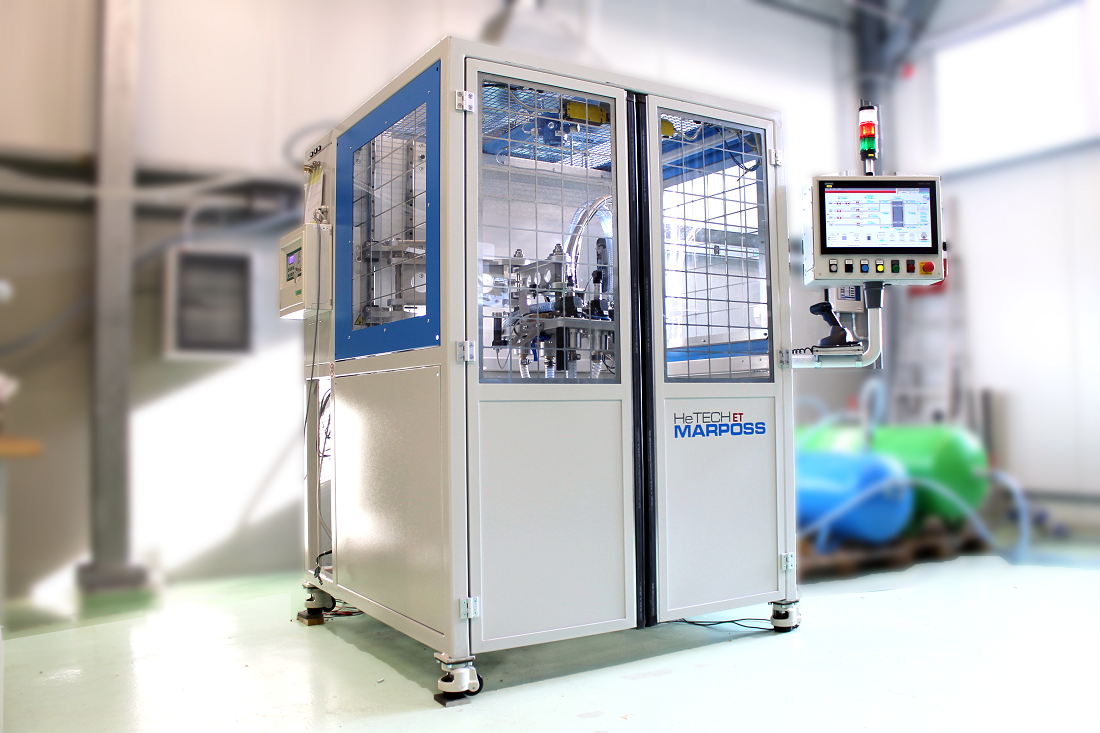Electrical Test
ELECTRICAL TEST BENCH FOR PEM FUEL CELLS STACK ASSEMBLY
HeTECH/Marposs, thanks to its long-term experience in industrial quality control, proposes many customized solutions in order to verify the correct assembly of the stack, its functionality and its mechanical seal, allowing to improve the production processes and product efficiency.
- Leak testing after stack assembly
- Leak testing of the housing and the complete Fuel Cell assembly
- Break-in procedure and End-of-Line testing machine
When the individual Cells are packed to obtain the required voltage and power into the Stack, the final quality of the product must be guaranteed through dedicated testing applications.

The OCV Test Bench is designed and conceived to carry out performance tests on fuel cell stacks.
It consists in letting the DUT off (no external load is connected to its busbar), but feeding it with reactants: hydrogen at the anode side, air at the cathode side. In this conditions, the cells are still capable to produce a difference of potential between their electrical pins. A Control Voltage Monitoring device, mounted on the stack and part of the DUT, continuously measures the voltage of each cell (or cluster of cells) and communicates it the PLC of the bench, allowing to detect short circuits and/or leakages through the membrane, also providing a precise location of the damage.
The bench is able to test differnt models and sizes (up to 400 cells) of stacks, thanks to the flexible and universal tooling for the electrical and the pneumatic connections. The bench is carefully designed in compliance with ATEX Directive, with a precise zoning of risky zones and with the adoption of the required safety measures.
Test pressures, rejection thresholds and productivity that our machines can reach may vary according to the technical specifications of the component and the production needs of the User.
- Test applicable at any stage of the process
- Easily automated test for integration into the production line
- No interference with the production cycle
- Fast testing procedure
- Full traceability of the tested component
- Ready for MES communication